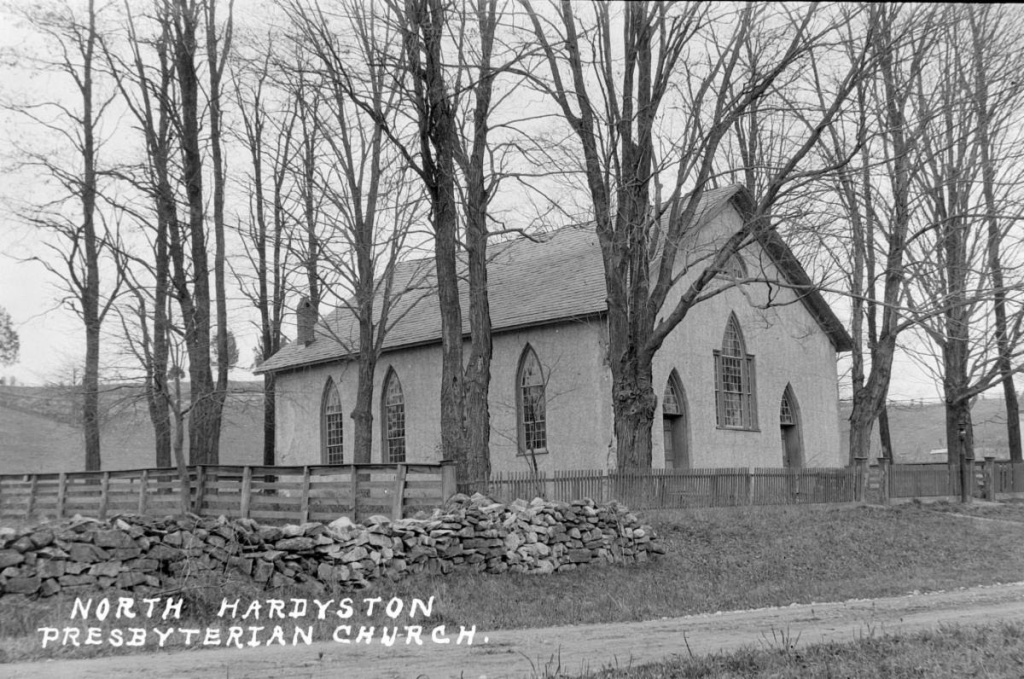Gallery
Journey through some of our precious historical houses and landmarks in our Hardyston Township

Claremont Mansion
Thomas Lawrence came from Philadelphia, descendent of Thomas Lawrence who was mayor of the city. He married the daughter of Lewis Morris III who was signer of the Declaration of Independence. Morris came to Sussex County to avoid the British and built a farm known as Morrisvale. Lawrence had come in 1780 and had a home on the property in 1794 with the mansion named Claremont. This was rebuilt around 1841 in the Greek Revival style. He and his son, also Thomas, were important figures in the area of Hardyston and Hamburg in agriculture with dairy and with commercial in banking and as postmaster and New Jersey state senator.
Walther House
This house was built in 1805 in the Stockholm
section of Hardyston, up on Snufftown Mountain. The Snufftown area at one time was a lively place. With the advent of the Newark Watershed around the turn of the last century much land turned back to forest. The Walthers had a tanning mill with a waterwheel on the Pequannock River in Snufftown.


North Church and Cemetery

Part of Hardyston Twp is a locale known as North Church. This is named after the North Church that was built there around 1810, A photo is shown of the North Church in the late 1800s. The hill behind it is where the North Hardyston Cemetery remains currently. Hardyston Twp was much larger years ago than today, and Sparta Presbyterian Church as built in Sparta shortly after the Revolutionary War. The northern part of the twp was far from Sparta and difficult to reach in those horse and carriage days so a new church was needed in the northern part of the township, thus prompting the name. The site is currently where the town garages are, at the corner of Route 95 and North Church Road.
Hardyston Creamery
Before the milk collected left for the city there was the creamery. One was in Stockholm and the attached photo shows it in later years. It is located right beside the track as you can see. It was near the Stockholm station. Both were behind where Jorgensen’s Restaurant was, the older Lewis place before that. It was located just to the west side of the Pequannock River near the old Hamburg Turnpike bridge close beside the Stockholm Methodist Church. As you can see, this was a busy area at one time.


Willistine School
Another place to look for would be the remains of a one room wooden schoolhouse. This reputedly was at one time a chapel also, but at this time the log building is gone without much of a trace. A photo is attached of the Willistine School.
Monroe One Room Schoolhouse


The Monroe School was located a few hundred yards from the border of Sparta Township. Today it is very near the road of Route 94, in a way indicating how things have changed from yesteryear’s slow procession of the infrequent horse and buggy or milk wagon from, say, 150 years ago.
The building has stone walls and a wooden roof. It was in operation as a school as far back as the year 1820. There were many teachers who provided the education of youth, mixed together in one room, who aged from a young 5 to those in their later teens. One teacher was Kate Coyle who lived on a farm nearby and for whom the park next to the school was named.

Stockholm United Methodist Church
In addition, near where the river goes, the headwaters of the Pequannock River, is the Stockholm United Methodist Church on Stockholm-Vernon Road (CR 515) pictured below. The church is impressive today, but imagine what a great structure this was 200 years ago when it came up amongst the wilderness that our area was back then.
Stockholm School
The Stockholm School, located on Route 515, across from the Stockholm United Methodist Church was one of several one room school houses. Pictured here is the Stockholm School on a winter day circa 1905. As “modern” transportation improved, students who might have had to walk long distances were “driven” to school in horse-drawn covered wagons. The kids are well-dressed, and noticeably, there are at least four school “busses” with a single horse pulling each carriage that held the driver of course and, by the looks of it, six or seven children. Hardyston was rural but active as a mostly farming community. Children still attended the Stockholm School in the 1950s, before the Hardyston School on Route 23 in Franklin was built. Later, the Stockholm School became the Hardyston Municipal Building, also housing the Hardyston Police Department, until the new building on Wheatsworth Road was opened.

